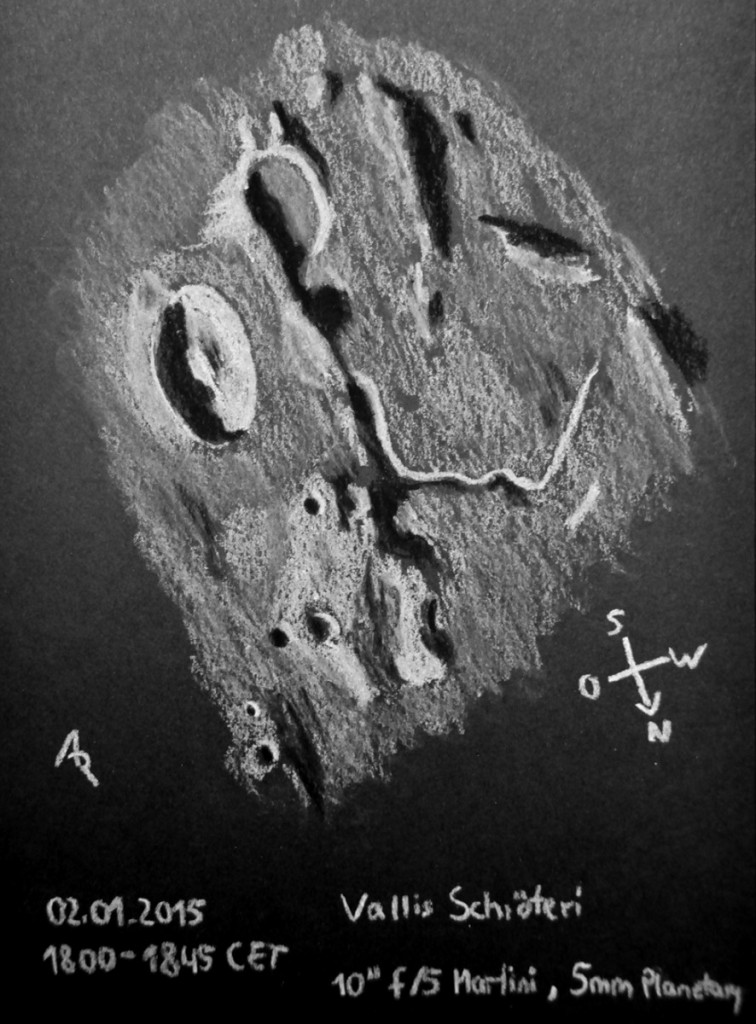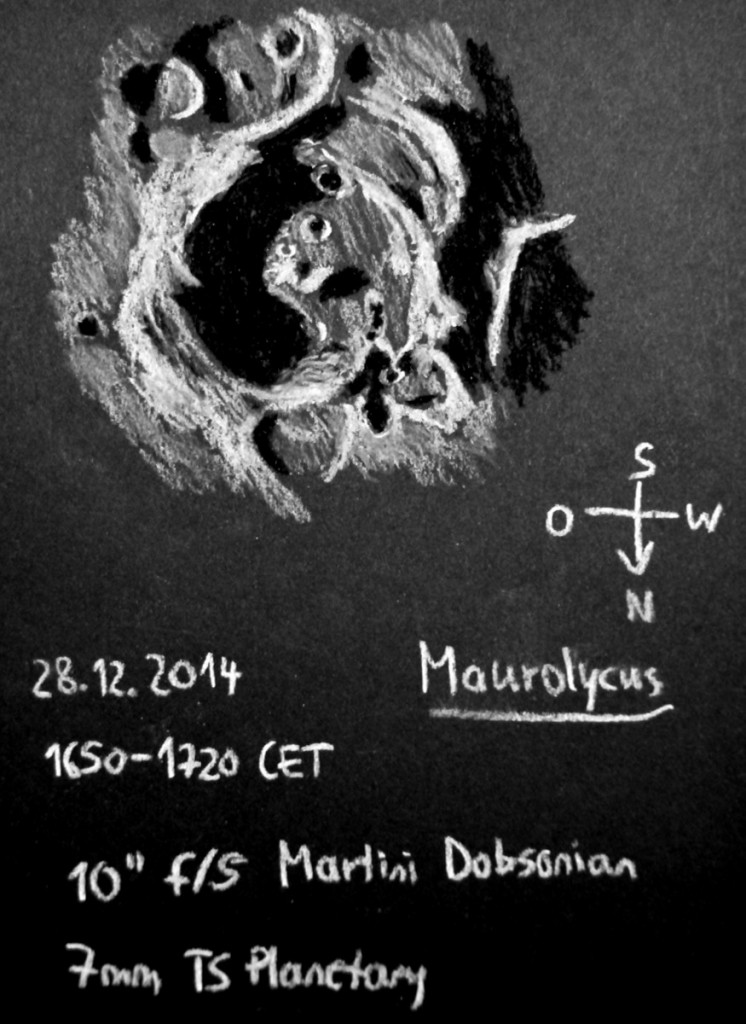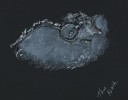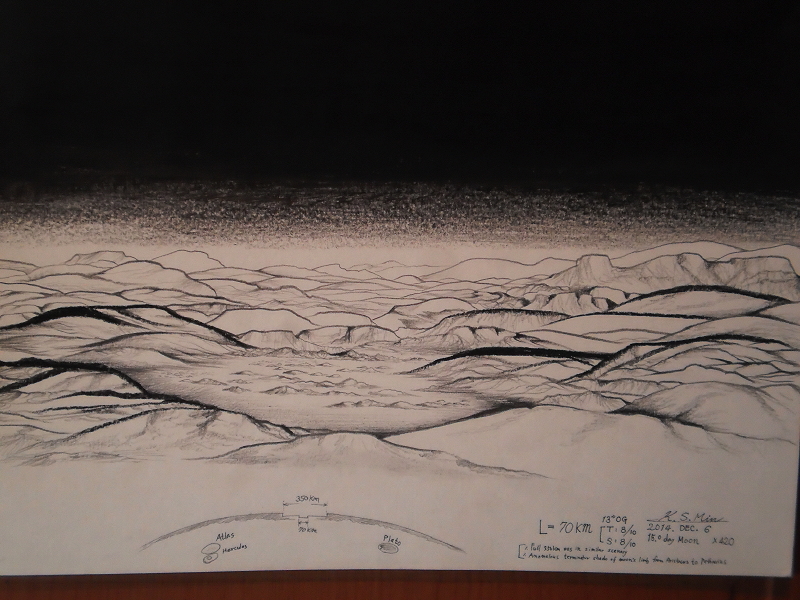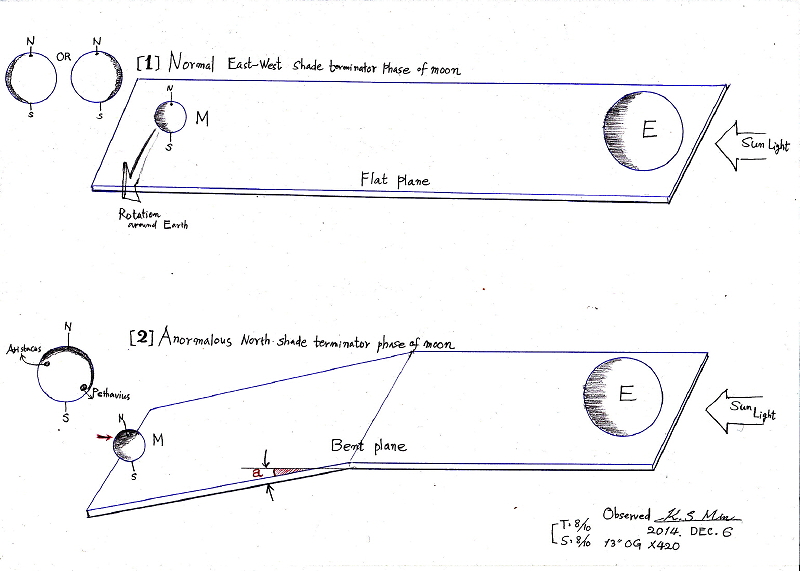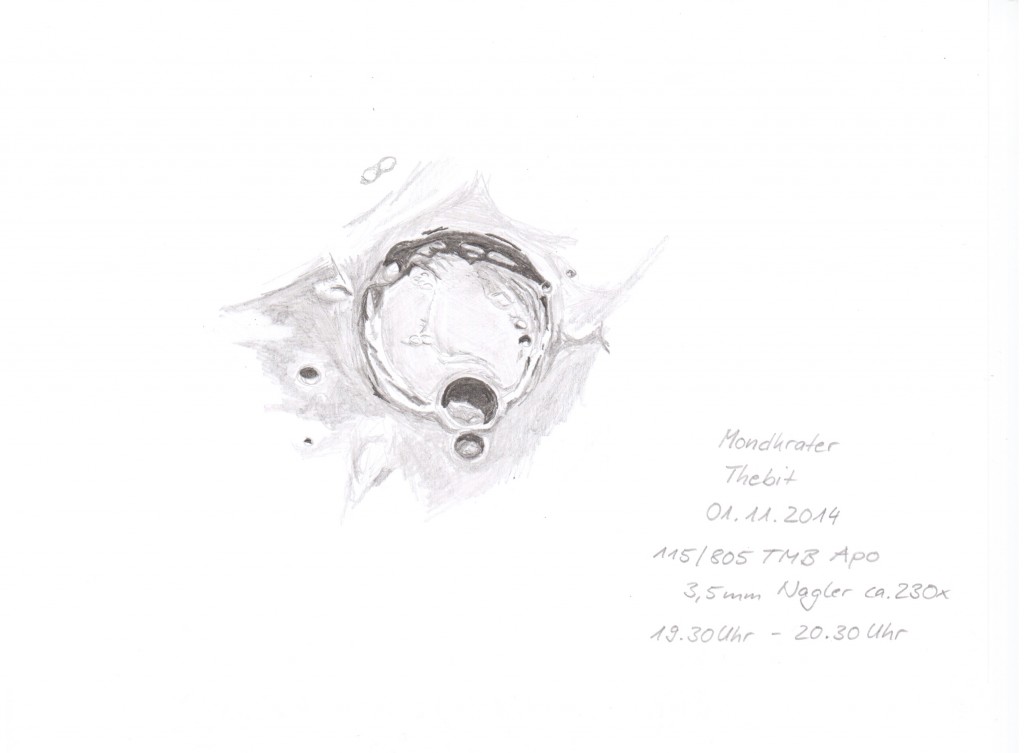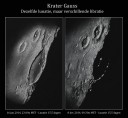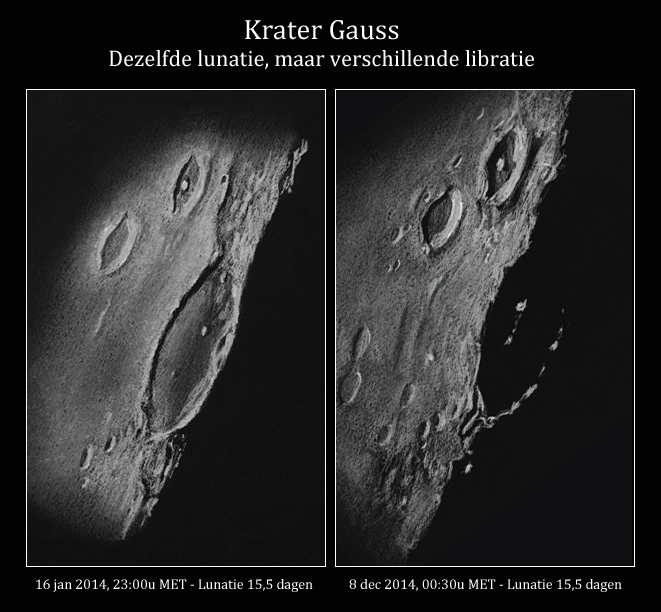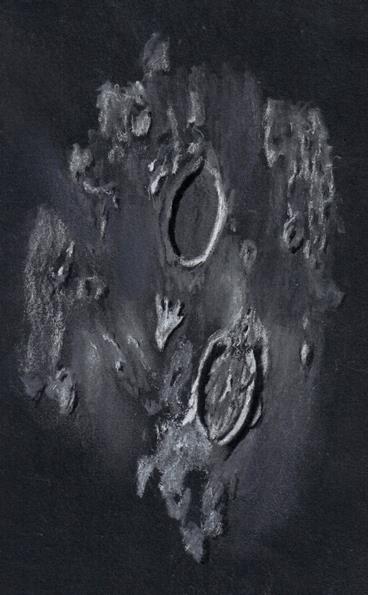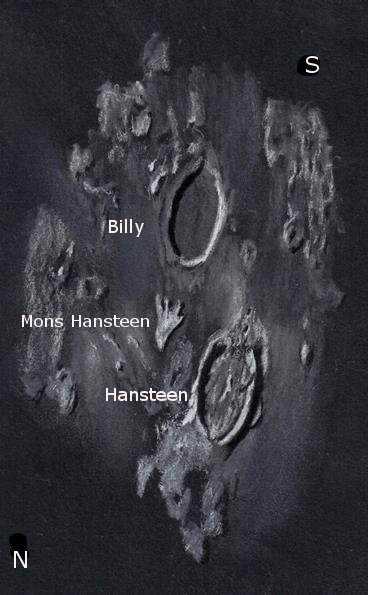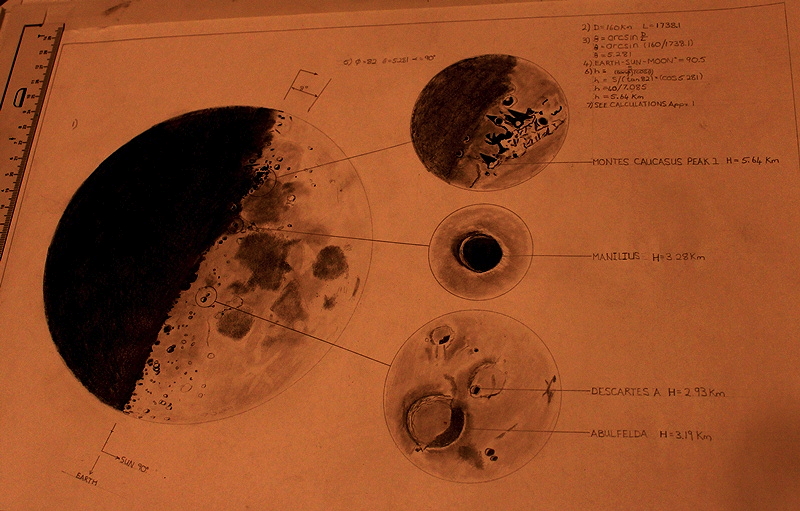
Lunar Features at First Quarter
Lunar Craters and Montes
Dunboyne, County Meath, Ireland
28/12/2014
Graphite pencils plain paper
This is a sketch I did as part of an assignment for an Astronomy course I am taking for fun. The exercise was to calculate 4 lunar features heights by making accurate sketch observations, measuring the shadows and calculating the height using the distances along with the Earth-Sun-Moon angles. It just happened to be clear at exactly first quarter. I am having trouble sketching a very dark black and new to many of the sketching techniques and making it up as I go along. Is there an extra dark lead past an 8b or should I be looking sketch on black paper? I am also having problems scanning and am taking photos of my sketches? Any help appreciated. Clear Skies! Kevin


